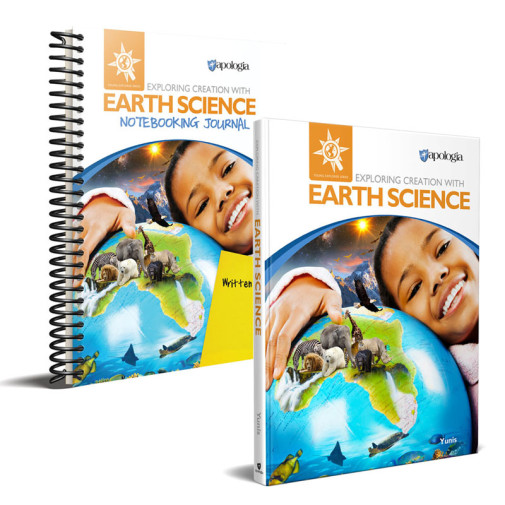We use cookies to make your experience better. To comply with the new e-Privacy directive, we need to ask for your consent to set the cookies. Learn more.
Exploring Creation with Earth Science Advantage Set with Notebooking Journal
The Exploring Creation with Earth Science Advantage Set™ with Notebooking Journal includes the textbook and Notebooking Journal.
Exploring Creation with Earth Science is part of the award-winning Young Explorer Series–voted the #1 homeschool science curriculum for over 14 years in a row.
This course is for elementary grades. As with all other titles in the Young Explorer Series, Exploring Creation with Earth Science is designed to have no prerequisites. We encourage you to follow your student's interests when choosing a Young Explorer title. There is not a particular order in which to complete the books in the series.
Encourage your young explorers to interact with their world by choosing an elementary homeschool science course that walks alongside students and talks with them as it investigates and points out the science behind everyday occurrences.
Let's dig in the dirt, not just talk about it. What is it? How did it get made? Why is it different depending on where you dig? What will you find living in it?
Let's realize that we don't get deliveries from outer space so everything we need, literally everything, is given to us and made fresh with the systems created to keep life forms alive throughout time. How does the Earth replenish its resources again, and again, and again? Join us in Exploring Creation with Earth Science and find out!
Your young explorer will begin this course with an overview of our cosmic address in the observable universe and then grow in knowledge of what, in the entire universe, makes Earth special and capable of sustaining life.
An awareness of the world will develop as students interact with the Earth's geosphere, hydrosphere, atmosphere, and biosphere. By digging deeper into the many different layers of the Earth and the cycles that renew the face of the Earth, your student will acquire not only a wisdom that will endure for a lifetime, but also an appreciation for our Creator.
This science study takes students on a journey into this wonderful planet we call home. From the galaxies above to the depths of the seas, children will learn more about the world around them, and the awesome God who created it! Filled with hands-on activities, this course offers fourteen modules teaching children about our observable universe, the atmosphere, hydrosphere, climate and weather, life cycle and so much more! One of the simpler activities that I absolutely love in this course is how children are shown what a frame of reference is, and how it appears that they are always in the center, even if they truly are not. What a life lesson for all of us! Other activities include making expanding universe thinking putty and creating a globe to map through their study. Written by Rachel Yunis, the co-author of the 2nd edition of Apologia's Exploring Creation with Advanced Biology. An excellent addition to the elementary line-up, providing homeschool families more options in their pursuit of a God-centered study of science. Hardcover.
For younger students or reluctant writers, the Junior Notebooking Journal requires less handwriting and provides more coloring pages, but other activities are similar. Additional supplements include Audiobooks in MP3 CD format and Lab Kits packaged by Nature’s Workshop. Most activities require only household items and other supplies. You can gather these yourself as needed, or purchase the kit for convenience. ~Deanne
| Product Format: | Product Bundle |
|---|---|
| Grades: | 4-6 |
| Brand: | Rainbow Resource Center |


Informative and easy to follow. The student journal is a must.
I have seen great reviews about this science curriculum
For my 10 year old 5th grader science
It was recommended to me by Heidi St. John and a few homeschool moms I know.